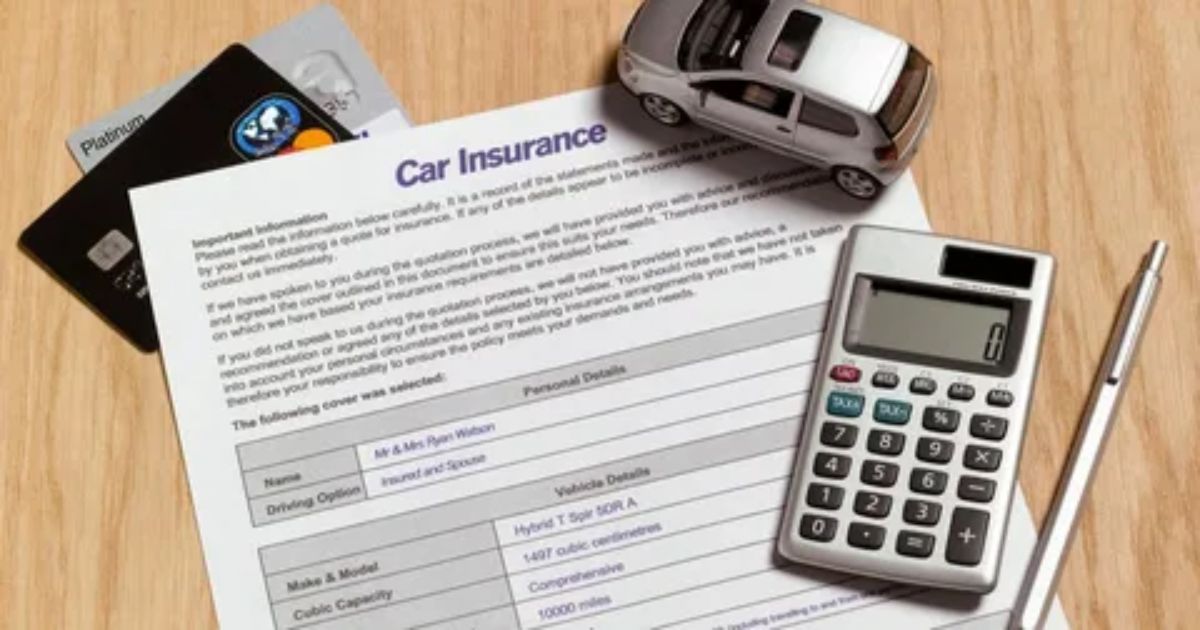Car insurance is a critical component of vehicle ownership, providing financial protection against various risks such as accidents, theft, and damage. However, the cost of car insurance can vary significantly based on multiple factors. The insurance company you choose can make a big difference.
One of the most significant factors affecting car insurance premiums is the driver’s profile. Younger drivers typically face higher premiums due to their lack of experience and higher chances of accidents. Gender also plays a role with male drivers often facing higher premiums than female drivers especially. A clean driving record with no accidents or traffic violations can lead to lower insurance costs. while a history of accidents or tickets will likely result in higher premiums.
Understanding these factors can help drivers make informed decisions and potentially lower their insurance premiums. This article explores the various elements that influence car insurance costs, examines average rates, and offers insights into how drivers can save money on their policies. Insurers consider age, gender, and driving history when determining rates. A driver’s driving history is crucial in determining insurance costs.
Factors Influencing Car Insurance Costs
The cost of car insurance is influenced by several variables, including the driver’s profile, vehicle type, coverage level, and geographical location. Insurers assess the risk profile of the driver based on age gender driving history and credit score. Younger drivers rise to pay higher premiums due to their lack of experience. Conversely, older drivers may benefit from lower rates if they have a clean driving record. A driver’s history is crucial in determining insurance costs.
Those with a record of accidents traffic violations or claims are considered high-risk and are charged higher premiums. In many states, insurers use credit scores to predict the likelihood of filing a claim. The make, model, and year of the car significantly impact insurance costs. Luxury and sports cars typically come with higher premiums due to their high repair costs and theft rates. Vehicles with high safety ratings and low theft rates often attract lower insurance costs.
Insurance Coverage Level And Deductibles

The extent of coverage chosen by the policyholder directly affects the cost. Basic liability coverage which is often the minimum requirement by law is generally the least expensive option. The deductible is the amount the policyholder agrees to pay out of pocket before the insurance kicks in. Make sure auto Insurance cover rental cars.
Higher deductibles typically result in lower premiums as the insurer’s payout is reduced in the event of a claim. Policyholders can opt for additional coverages such as uninsured/underinsured motorist coverage personal injury protection and roadside assistance. While these add-ons enhance the protection, they also increase the overall cost of the insurance policy.
Geographical Location Impact On Car Insurance Cost
The area where the driver lives and parks the car also affects insurance premiums. Urban areas with higher traffic density and crime rates tend to have higher premiums compared to rural areas. Insurance costs can also vary based on state regulations. Each state has different minimum coverage requirements and states with higher minimums tend to have higher average premiums.
Some states also prohibit the use of credit scores in determining insurance rates which can impact the cost for drivers in those regions. Those with a record of accidents traffic violations or claims are considered high-risk and are charged higher premiums. The average cost of car insurance in the United States varies widely based on the factors mentioned above.
Tips To Lower Car Insurance Costs

While car insurance can be a significant expense there are several strategies to help reduce the cost. Insurers offer various discounts such as for good students and military employees. Inquiring about available discounts can lead to significant savings. Vehicles with high safety ratings and low theft rates often come with lower insurance premiums.
Bundle Policies
Many insurers offer discounts for bundling multiple policies, such as home and auto insurance.
Maintain A Good Driving Record
A clean driving record can lead to lower premiums and qualify for safe driver discounts.
Improve Credit Score
In states where credit score affects insurance rates, improving one’s credit score can lead to lower premiums.
Average Car Insurance Costs
The average cost of car insurance in the United States varies widely based on the factors mentioned above. According to recent data the national average annual premium for full coverage is approximately $1,500. However, this figure can fluctuate significantly. In contrast states like Vermont and Maine known for their lower population density and fewer claims see average premiums below $1,000.
- The average car insurance cost in the U.S. is around $1,500 per year.
- It varies greatly depending on the state you live in.
- The type of car you drive affects your insurance cost.
- It also depends on your driving record and age.
- The more coverage you choose, the higher the cost will be.
- It is often cheaper if you bundle with other insurance.
- The insurance company you choose can make a big difference.
The Role of Insurers in Cost Determination
Insurance companies play a critical role in determining car insurance costs. They use complex algorithms to assess risk and set premiums. Factors such as claims history and repair costs are analyzed to guess future claims and adjust rates accordingly. Insurers also monitor the market and adjust their pricing strategies to remain competitive.
Claims History
Insurers track claims history to identify patterns and assess risk levels. High claim frequencies in certain regions or among specific vehicle types can lead to higher premiums for those groups.
Repair Costs
The cost of vehicle repairs significantly impacts insurance rates. Advances in automotive technology have made repairs more expensive, contributing to higher premiums. Insurers factor in these costs when setting rates to ensure they can cover potential claims.
Economic Trends
Economic factors such as inflation and labor costs can influence insurance rates. During economic downturns insurers may experience higher claim frequencies due to increased financial stress among policyholders, leading to rate adjustments.
The Importance of Regular Policy Reviews

Regularly reviewing your car insurance policy is essential to ensure you have the right coverage at the best price. Life changes such as getting married, moving, or buying a new car can impact your insurance needs and rates. Additionally, insurance companies periodically adjust their rates and introduce new discounts so it’s beneficial to review your policy at least once a year.
During your review consider whether your current coverage levels are still appropriate. For example, if you have an older car, you might decide that comprehensive and collision coverage are no longer necessary. Conversely if your financial situation has improved you might want to increase your coverage limits for better protection.
Future Trends in Car Insurance Costs
The car insurance industry is continually evolving, and future trends are likely to impact insurance costs. The rise of autonomous vehicles, for instance, could lead to a significant reduction in accident rates. The adoption of telematics which involves monitoring driving behavior through devices or mobile apps is becoming more prevalent. Usage-based insurance programs can offer personalized rates based on actual driving habits potentially lowering costs for safe drivers.
Increasing frequency of natural disasters due to climate change can lead to higher insurance claims, impacting premiums. Insurers are adapting to these changes by adjusting rates and coverage options in high-risk areas. Changes in state and federal regulations can also affect insurance costs. For instance, any reforms in healthcare or vehicle safety standards can influence the claims landscape and insurance rates.
Frequently Asked Questions
What Factors Affect The Cost Of Car Insurance?
The cost of car insurance is influenced by several factors, including the driver’s age, gender, driving history, credit score, the type of vehicle, deductibles, geographical location, and state regulations.
How Can I Lower My Car Insurance Premiums?
To lower car insurance premiums, you can shop around for the best rates bundle multiple policies maintain a good driving record. Take advantage of discounts and improve your credit score and drive a safer car.
Why Do Younger Drivers Pay Higher Premiums?
Younger drivers especially teenagers are considered high-risk due to their lack of driving experience and higher likelihood of accidents. This increased risk translates to higher insurance premiums.
How Does My Vehicle Type Affect My Insurance Costs?
The make, model, and year of your vehicle significantly impact insurance costs. Luxury and sports cars typically have higher premiums due to their high repair costs and theft rates while vehicles with high safety ratings and low theft rates often attract lower premiums.
Conclusion
The cost of car insurance is a complex interplay of numerous factors, including driver demographics vehicle characteristics coverage choices and geographical considerations. While premiums can vary widely understanding these influencing elements can help policyholders make informed decisions and find ways to lower their insurance costs.
By maintaining a good driving record shopping around for the best rates and taking advantage of available discounts drivers can manage their car insurance expenses more effectively. As the automotive and insurance industries continue to evolve, staying informed about changes and trends will be crucial for navigating the landscape of car insurance costs.
